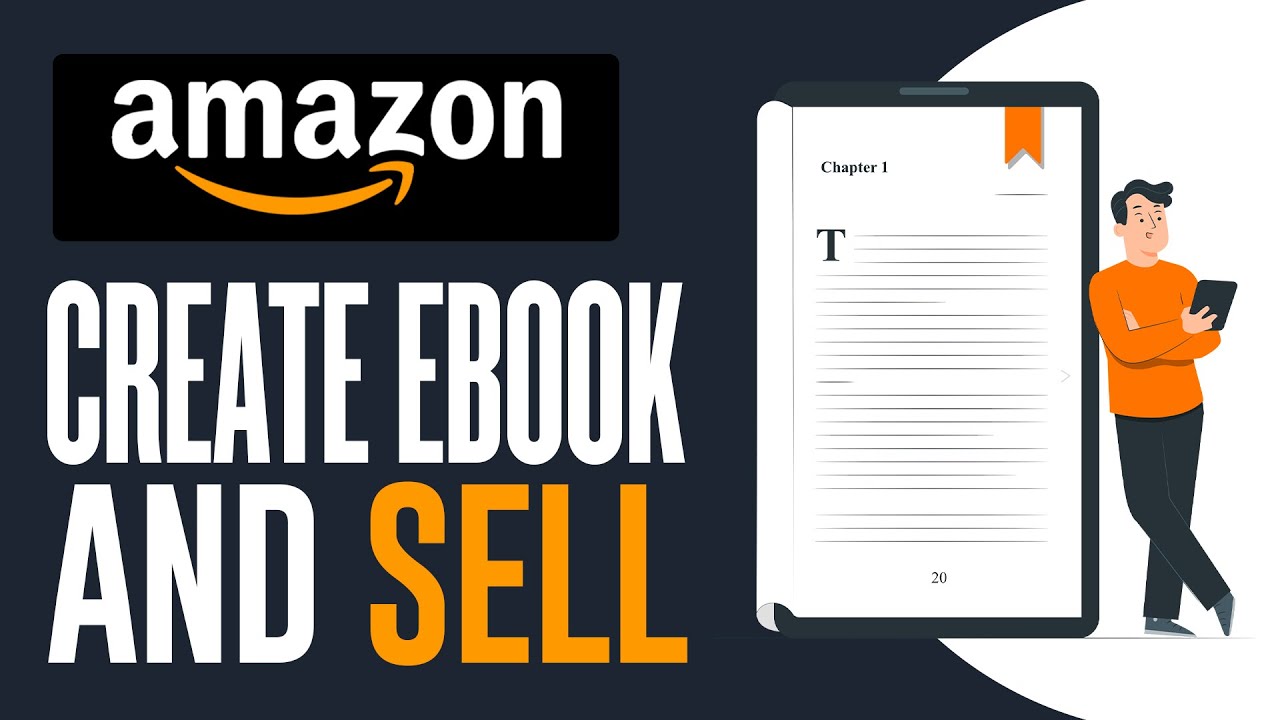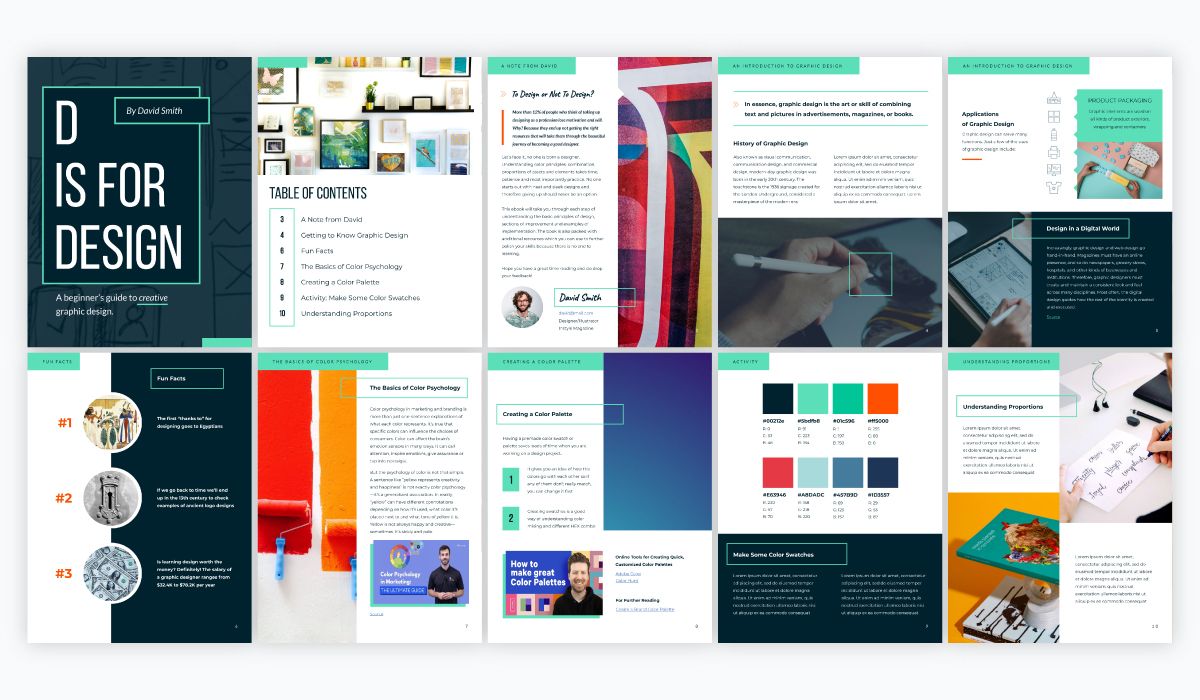Introduction
Welcome to the exciting world of eBook creation and selling on Amazon! In today’s digital era, self-publishing an eBook is an excellent way to share your knowledge, passion, and creativity with a global audience. With millions of customers browsing through the Amazon store every day, selling your eBook on this popular platform can provide you with a tremendous opportunity for success.
In this comprehensive guide, we will walk you through the step-by-step process of creating and selling your eBook on Amazon. Whether you are a budding author, an expert in your field, or an aspiring fiction writer, this guide is designed to help you navigate the world of self-publishing and maximize your chances of reaching a wide audience.
Before diving into the process, it’s crucial to note that creating and selling an eBook requires determination, effort, and strategic planning. While it may seem overwhelming at first, don’t worry! We will break down each step into manageable tasks and provide you with valuable tips and insights along the way.
By the end of this guide, you will have a clear understanding of how to set up your Amazon account, choose a topic and genre for your eBook, write and format your content, design an eye-catching cover, upload your eBook to Amazon, price and promote your creation, and monitor your sales and reviews.
Whether you aspire to be a full-time writer, generate passive income, or simply share your expertise with the world, self-publishing an eBook on Amazon can pave the way for achieving your goals. So let’s get started on this exciting journey!
Setting Up Your Amazon Account
Before you can start selling your eBook on Amazon, you’ll need to set up an Amazon account specifically for self-publishing. Follow these steps to get started:
- Create an Amazon KDP Account: KDP, or Kindle Direct Publishing, is the platform that allows you to self-publish your eBook on Amazon. Go to the KDP website and click on “Sign in” or “Sign up.” If you already have an Amazon account, you can use those login credentials.
- Set Up Your Author Profile: Once you have signed in to your KDP account, you’ll be prompted to create an author profile. This is an important step as it allows readers to learn more about you and your work. Fill in the required details, including your bio, photo, and any relevant links or social media profiles.
- Add Your Tax Information: To comply with tax regulations, Amazon requires you to provide your tax information. This step ensures that you receive the appropriate royalties from your eBook sales. If you have any questions or concerns regarding tax requirements, consult with a professional tax advisor.
- Specify Your Book Details: Now it’s time to provide specific details about your eBook. This includes the title, subtitle, description, language, and publication date. Be sure to craft an engaging and compelling book description that accurately represents your content and captures the attention of potential readers.
- Choose Your Target Audience: Determine the target audience for your eBook by selecting appropriate categories and keywords. This helps Amazon place your book in relevant search results and improve its visibility to potential readers.
- ISBN: While Amazon’s KDP platform doesn’t require an ISBN (International Standard Book Number) for eBooks, you can provide one if you have it. If you choose not to provide an ISBN, Amazon will assign a unique ASIN (Amazon Standard Identification Number) to your eBook.
- Select Your Pricing and Royalty Options: Decide on the pricing and royalty options for your eBook. Amazon provides different royalty plans, including the 35% and 70% royalty options. Consider factors such as the length of your eBook, market trends, and your pricing goals when making this decision.
Once you have completed these steps, it’s time to move on to the next phase of eBook creation: choosing a captivating topic and genre for your eBook.
Choosing a Topic and Genre
Choosing the right topic and genre for your eBook is a critical step that can greatly impact its success. Here are some tips to help you select a compelling topic and genre:
- Identify Your Passion and Expertise: Start by considering subjects that you are passionate about and have in-depth knowledge or expertise in. Writing about a topic you are truly passionate about will not only make the process more enjoyable but will also enhance the quality of your content.
- Conduct Market Research: Before settling on a specific topic, it’s essential to conduct market research to identify keywords, trends, and popular niches within the eBook marketplace. This research will help you understand the competition and identify gaps or underserved areas that you can target.
- Consider Audience Demand: Analyze the demand for topics and genres within your target audience. Are there any specific subjects that are currently trending or in high demand? Understanding your audience’s preferences and interests will enable you to create content that resonates with them.
- Narrow Down Your Focus: Once you have identified a broad topic, consider narrowing down your focus to a specific subtopic or niche. This will help you connect more effectively with your target audience and establish yourself as an expert in a particular area.
- Balance Evergreen and Trending Topics: While it’s important to choose a topic that has a lasting appeal (evergreen), incorporating some elements of trending topics or current events can also generate interest and attract readers.
- Think About Target Market Potential: Consider the potential market size and demand for your selected topic and genre. Is there a sizable audience that will be interested in reading about and purchasing books on your chosen subject?
- Personalize Your Approach: Find a unique angle or perspective to differentiate your eBook from others in the same genre. Adding a personal touch or sharing personal experiences can make your content more relatable and engaging for readers.
Remember, choosing a topic and genre is not a decision to be taken lightly. Take the time to carefully evaluate your options and select a subject that aligns with your passion, expertise, and market demand. Once you have finalized your topic, it’s time to dive into the next phase of eBook creation: writing your eBook.
Writing Your eBook
Now that you have chosen a captivating topic and genre for your eBook, it’s time to start writing and creating quality content. Here are some tips to help you in the writing process:
- Create an Outline: Before diving into writing, create a detailed outline that outlines all the key points and chapters of your eBook. This will provide structure and serve as a roadmap for your writing process. It will also help you maintain a logical flow and ensure all necessary information is included.
- Set Writing Goals: Establish a writing routine and set specific goals to keep yourself motivated and on track. Whether it’s writing a certain number of pages or dedicating a specific amount of hours each day, having goals will help you maintain consistency and make progress.
- Write Engaging and Clear Content: Focus on crafting clear and concise sentences that are easy to read and understand. Use a conversational tone to connect with your readers and keep them engaged throughout the book.
- Provide Value: Ensure that your eBook provides valuable information or entertainment to your readers. Research your topic thoroughly and include actionable tips, insights, or engaging stories that will resonate with your audience.
- Edit and Proofread: After completing the initial draft, take the time to edit and proofread your eBook. Check for grammatical errors, spelling mistakes, and clarity of content. Consider hiring a professional editor for a more thorough review if necessary.
- Solicit Feedback: Share your manuscript with trusted friends, colleagues, or beta readers and ask for honest feedback. Their insights will help you identify areas for improvement and ensure your eBook meets the needs and expectations of your target audience.
- Add Visuals: Depending on the topic, consider including relevant visuals such as images, graphs, or tables to enhance the reading experience and make your content more engaging.
- Organize Chapters and Sections: Structure your eBook in a logical manner by organizing it into chapters and sections. This will make it easier for readers to navigate and digest the content.
Remember, writing an eBook is a creative process that requires time, effort, and dedication. Set realistic goals, stay persistent, and continuously strive to deliver valuable content to your readers. Once you have perfected your eBook, it’s time to move on to the next step: formatting your eBook for publication.
Formatting Your eBook
Formatting your eBook is a crucial step to ensure that it looks professional and can be easily accessed and read by your audience. Here are some important aspects to consider when formatting your eBook:
- Choose the Right File Format: Amazon’s preferred eBook format is Kindle (MOBI) or ePub. Choose the format that best suits your needs and use an eBook formatting tool or software to convert your manuscript into the desired format.
- Format the Text: Ensure consistent formatting throughout your eBook. Use clear and legible fonts, appropriate font sizes, and maintain proper spacing between paragraphs. Avoid using elaborate fonts or excessive formatting that may distract or confuse readers.
- Include a Table of Contents: Create a table of contents that lists all the chapters and sections of your eBook. This will make it easy for readers to navigate through the content and find specific sections they are interested in.
- Add Page Numbers: Depending on the platform you are publishing on, you may need to include or exclude page numbers. Make sure to follow the guidelines provided by the publishing platform.
- Optimize for Different Devices: Keep in mind that readers may access your eBook on various devices, including smartphones, tablets, or e-readers. Ensure that your eBook is formatted to adapt to different screen sizes to provide a seamless reading experience.
- Check for Formatting Errors: Carefully review your eBook for any formatting errors such as broken links, incorrect paragraph indents, or inconsistent alignment. Test your eBook on different devices or use an eBook preview tool to ensure that the formatting appears as intended.
- Add Interactive Features (if applicable): Depending on the nature of your eBook, consider adding interactive features such as hyperlinks, clickable images, or multimedia elements to enhance reader engagement.
- Consider Professional Formatting Services: If you are not confident in your formatting skills, consider hiring a professional eBook formatting service to ensure your eBook looks polished and well-structured.
Formatting your eBook properly is essential for providing a seamless reading experience to your audience. Take the time to meticulously format your eBook and test it on different devices to ensure that it appears as intended. Once you are satisfied with the formatting, it’s time to move on to the next step: designing an eye-catching cover for your eBook.
Designing a Cover
Designing a compelling and visually appealing cover is essential to grab the attention of potential readers and entice them to click on your eBook. Here are some tips to help you design an eye-catching cover:
- Research Best-Selling Covers: Study the covers of successful eBooks in your genre to get inspiration and insight into what works. Look for common design elements, color schemes, fonts, and imagery that resonate with your target audience.
- Create a Clear and Engaging Title: Your eBook’s title should be clear, concise, and attention-grabbing. Make sure it is easily readable and stands out against the background image or color of your cover.
- Choose High-Quality Images or Graphics: Use high-quality images or graphics that are relevant to your eBook’s topic and genre. Avoid using generic stock photos that may not accurately represent your content or captivate your target audience.
- Consider Typography: Select fonts and typography that align with the mood, tone, and genre of your eBook. Choose fonts that are legible and complement the overall design of your cover.
- Balance Visuals and Text: Strike a balance between visuals and text on your cover. Ensure that the cover doesn’t appear cluttered or overwhelming by keeping the design clean and uncluttered.
- Use Color Psychology: Use colors strategically to evoke certain emotions or create a specific mood that aligns with the message or genre of your eBook. Consider researching color psychology to understand the impact different colors can have on your audience.
- Consider Hiring a Professional Designer: If you lack design skills or want to ensure a polished and professional cover, consider hiring a professional cover designer. They can create a custom design that effectively represents your eBook and makes it stand out.
- Test Different Versions: Create multiple versions of your cover and test them with your target audience or trusted individuals. Their feedback can help you identify the most appealing design that attracts the attention of potential readers.
- Ensure Consistency with Your Brand: If you have an established author brand, ensure that your cover design aligns with your overall brand aesthetic. This consistency helps establish recognition and trust among your existing readers.
Remember, your eBook cover is your first opportunity to make a positive impression on potential readers. Invest time and effort into designing a visually striking cover that accurately represents your content and creates intrigue. Once you have finalized your cover design, it’s time to move on to the next step: uploading your eBook to Amazon.
Uploading Your eBook to Amazon
Once you have completed the writing, formatting, and cover design processes, it’s time to upload your eBook to Amazon’s Kindle Direct Publishing (KDP) platform. Follow these steps to successfully upload your eBook:
- Sign in to Your KDP Account: Log in to your Kindle Direct Publishing account. If you don’t have an account, create one by following the registration process.
- Add a New eBook: From your KDP dashboard, click on “Create a new Kindle eBook.” This will take you to a page where you can input all the necessary details about your eBook.
- Enter eBook Details: In this section, provide all the relevant information about your eBook, such as the title, author name, book description, keywords, language, and publishing rights. Upload your formatted eBook file, and KDP will automatically convert it into a readable format.
- Upload the Cover Image: Follow the instructions to upload your cover image. Make sure the image meets Amazon’s guidelines in terms of size, resolution, and content.
- Choose eBook Pricing: Set the pricing for your eBook. Consider factors such as your target audience, competition, and royalty options (35% or 70%) when determining the price.
- Select Distribution Options: Decide whether you want to enroll your eBook in Kindle Select, a program that offers additional benefits and exclusivity, or choose wider distribution options that make your eBook available on other platforms.
- Preview and Publish: Use the preview feature provided by KDP to review how your eBook will appear to readers. Verify all the details, including the formatting, cover, and content. Once you are satisfied, click on the “Publish” button to make your eBook available for purchase.
- Monitor Sales and Reviews: After publishing your eBook, keep track of your sales and customer reviews through the KDP dashboard. Monitor your sales performance, promotions, and any feedback from readers to optimize your marketing strategies.
- Make Updates if Necessary: KDP allows you to make updates to your eBook even after it’s published. If you receive feedback or identify areas for improvement, make the necessary changes and upload the updated version to ensure the best possible reading experience for your audience.
Congratulations! Your eBook is now available for purchase on Amazon. Take advantage of the promotional and marketing tools provided by KDP to maximize its reach and exposure. Now, it’s time to move on to the next section: pricing your eBook appropriately to attract potential buyers.
Pricing Your eBook
Setting the right price for your eBook is crucial for attracting potential buyers and maximizing your sales and revenue. Consider the following factors when pricing your eBook on Amazon:
- Know Your Target Audience: Understand the buying behavior and price sensitivity of your target audience. Research similar books in your genre to gauge the price range that readers are willing to pay.
- Consider Book Length and Value: Evaluate the length and value proposition of your eBook. Longer and more comprehensive books generally justify higher prices, while shorter books or novellas may be priced lower.
- Analyze Competitor Pricing: Study the pricing strategies of other books in your genre. While you don’t want to undercut your competition, pricing your eBook competitively can help you attract potential buyers.
- Consider Royalty Options: Amazon offers two royalty options: 35% and 70%. The 70% royalty option is available for books priced between $2.99 and $9.99 (depending on the market). Assess whether higher royalty rates or a lower price point align better with your revenue goals.
- Offer Promotional Pricing: Consider running promotional offers, such as temporarily discounting your eBook or offering it for free, to generate buzz, attract new readers, and potentially boost your long-term sales.
- Test and Adjust: Be open to experimenting with different price points to find the sweet spot that balances profitability with attracting readers. Monitor your sales and adjust the price accordingly if you are not achieving the desired results.
- Consider Pre-orders: Amazon allows you to set up pre-orders for your eBook, which can help generate excitement and early sales. Determine if offering pre-orders aligns with your book launch and marketing strategy.
- Monitor Sales and Real-Time Data: Use the sales reports and real-time data provided by Amazon’s Kindle Direct Publishing (KDP) platform to track the impact of pricing changes on your eBook’s performance. Use this data to refine your pricing strategy over time.
Remember, finding the optimal price for your eBook may require some trial and error. Balancing market demand, reader expectations, and your own revenue goals is key. Continuously monitor the results and be open to adjusting your pricing strategy to maximize the impact of your eBook on Amazon’s marketplace. With the right price, you can increase your chances of attracting readers and achieving success in the competitive eBook industry.
Setting Up Marketing and Promotion
Once your eBook is live on Amazon, it’s essential to implement effective marketing and promotion strategies to reach a wider audience and increase your book’s visibility. Here are some key steps to set up your marketing and promotion efforts:
- Create an Author Website or Blog: Establish an online presence by creating a website or blog dedicated to your author brand and eBook. Share information about your book, provide updates, and engage with your audience.
- Optimize Your Amazon Book Page: Ensure that your book’s Amazon page is fully optimized for discoverability. Use relevant keywords in your book description, select appropriate categories and keywords, and monitor and respond to customer reviews.
- Tap into Social Media: Leverage the power of social media platforms to promote your eBook. Create author profiles on platforms such as Facebook, Twitter, Instagram, or LinkedIn to connect with potential readers and share updates, excerpts, and other engaging content.
- Utilize Email Marketing: Build an email list of interested readers and engage with them through regular newsletters. Provide value, such as exclusive content or discounts, to incentivize readers to sign up and stay connected with your work.
- Seek Book Reviews: Solicit honest reviews from readers, bloggers, or influential reviewers in your genre. Positive reviews can significantly impact sales and help build credibility for your eBook.
- Explore Advertising Opportunities: Consider investing in targeted advertising campaigns to increase the visibility of your eBook. Platforms such as Amazon Ads, social media ads, or book promotion websites can help you reach potential readers.
- Engage in Guest Blogging and Author Interviews: Seek opportunities to contribute guest posts to relevant blogs or websites in your genre. Participate in author interviews or podcasts to increase your visibility and connect with a broader audience.
- Participate in Virtual Events and Book Launches: Explore virtual book fairs, online conferences, or book launch events to showcase your eBook. Engage with readers, fellow authors, and industry professionals to expand your network and create buzz around your book.
- Harness the Power of Book Promotions: Take advantage of various book promotion services or websites that offer discounted or free book promotions to boost sales and gain exposure.
- Utilize Influencer Marketing: Collaborate with influencers and book reviewers in your genre who have a significant following. Their recommendations and endorsements can help amplify your reach and gain credibility with their audience.
Remember, marketing and promoting your eBook is an ongoing process. Continuously assess the effectiveness of your strategies, explore new avenues, and adapt your approach based on results and reader feedback. Combined with a well-crafted eBook and a solid marketing plan, these efforts can greatly enhance your book’s visibility and increase its chances of success.
Monitoring Sales and Reviews
Monitoring the sales and reviews of your eBook on Amazon is crucial for understanding its performance and making informed decisions to enhance its visibility and success. Here’s how you can effectively track and analyze sales and reviews:
- Track Sales Metrics: Utilize the sales reporting tools provided by Amazon’s Kindle Direct Publishing (KDP) platform to monitor your eBook’s sales performance. Track metrics such as total sales, units sold, royalties earned, and fluctuations in sales over time.
- Analyze Sales Patterns: Look for patterns or trends in your sales data. Identify periods of increased sales, such as during promotions or marketing campaigns, and capitalize on strategies that yield positive results.
- Review Customer Feedback: Regularly check customer reviews of your eBook on Amazon. Take note of both positive and negative reviews to gain insights into what readers appreciate and areas where improvements can be made.
- Respond to Reviews and Engage with Readers: Interact with readers by responding to their reviews, thanking them for their feedback, and addressing any concerns they may have. This demonstrates your engagement and dedication to providing a positive experience for your audience.
- Solicit Reviews: Encourage satisfied readers to leave a review by including a call-to-action at the end of your eBook or in your author bio. However, avoid offering incentives for positive reviews, as this violates Amazon’s policies.
- Monitor Competitor Performance: Keep an eye on the sales rankings and reviews of competing eBooks in your genre. This can provide insights into market trends, reader preferences, and strategies that may help you improve your own eBook’s performance.
- Utilize Amazon Advertising Reports: If you are running Amazon Ads to promote your eBook, review the advertising reports provided by Amazon. Analyze the data to evaluate the effectiveness of your ad campaigns and make adjustments as necessary.
- Seek Customer Feedback: Actively seek feedback from your readers through surveys, email newsletters, or social media interactions. This can provide valuable insights that can help refine your future writing and marketing strategies.
- Monitor Sales Rank: Keep track of your eBook’s sales rank on Amazon to understand its popularity relative to other books in your genre. A higher sales rank indicates increased visibility and sales potential.
- Evaluate Marketing Efforts: Regularly assess the impact of your marketing and promotional activities on sales and reviews. Refine your strategies based on the results to maximize your eBook’s exposure and success.
By consistently monitoring sales and reviews, you can gain valuable insights into your eBook’s performance and make data-driven decisions to improve its visibility and reach. Stay engaged with your readers, respond to their feedback, and continually strive to deliver a high-quality reading experience. With careful monitoring and adjustments, you can increase the chances of your eBook’s success on Amazon’s platform.
Conclusion
Congratulations on completing the comprehensive guide to creating and selling your eBook on Amazon! You’ve learned the step-by-step process of setting up your Amazon account, choosing a captivating topic and genre, writing and formatting your eBook, designing an eye-catching cover, uploading it to Amazon, pricing it appropriately, setting up marketing and promotion efforts, and monitoring sales and reviews. You are now equipped with the knowledge and tools necessary to successfully navigate the self-publishing journey.
Remember, self-publishing an eBook is not just about writing and publishing; it’s also about reaching and engaging with your target audience. Implementing effective marketing strategies, actively seeking feedback, and continuously analyzing sales and reviews are all key components of a successful eBook venture.
Stay committed to refining and improving your craft. Keep writing and exploring new ideas. Embrace the feedback and reviews you receive, both positive and negative, as they can serve as valuable insights for growth.
Self-publishing offers endless opportunities for aspiring authors, experts, and creatives. With dedication, persistence, and a solid understanding of the process, you have the ability to share your stories, knowledge, and passion with a global audience.
Now that you have the tools and knowledge at your disposal, it’s time to embark on your eBook publishing journey. Embrace the challenges, celebrate the milestones, and continue to learn and adapt along the way. Best of luck in your self-publishing endeavors, and may your eBook find success and bring joy to readers around the world!

























